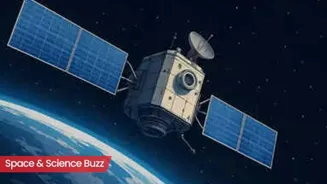Here are today’s most important updates from the realm of Science and Space.
Pixxel to Power India’s First Private Eye in the Sky
The Indian National Space Promotion and Authorisation Centre (IN-SPACe) has
announced the selection of a PixxelSpace India-led consortium to design, build, and operate the country’s first fully indigenous commercial Earth Observation (EO) satellite constellation under a pioneering Public-Private Partnership (EO-PPP) model. The constellation will deliver high-resolution, analysis-ready data and value-added services for applications such as climate monitoring, disaster management, agriculture, marine surveillance, urban planning, infrastructure development, and national security, while also meeting global demand for geospatial intelligence. By generating indigenous satellite data, the initiative aims to reduce reliance on foreign sources, ensure India’s data sovereignty, and place the nation among the global leaders in space-based data solutions.
Webb Unveils Universe’s First Monster in the Dark

Scientists using the James Webb Space Telescope (JWST) have identified the earliest black hole found thus far, dating back to more than 13 billion years ago. The black hole and its home galaxy, together dubbed CAPERS-LRD-z9, existed just 500 million years after the Big Bang. Its properties could help researchers understand what the universe was like in that elusive early era. CAPERS-LRD-z9 is a type of galaxy called a "Little Red Dot," so named because they're small (as galaxies go) and appear to emit red light when observed with JWST's powerful infrared sensors.
Changing Your Steps Could Change Your Knees’ Future

Gait analysis and pain measures show that subtly adjusting the angle of the foot during walking may reduce knee pain caused by osteoarthritis. This approach may also slow progression of the condition, an incurable disease in which the cartilage cushion inside a joint breaks down. The results suggest that those trained to angle their feet slightly inward or outward from their natural alignment experienced slower cartilage degeneration in the inner part of their knee compared with those who were encouraged to walk more frequently without changing their foot position.
Sky’s Secret Fireworks — NASA Astronaut Snaps Rare ‘Gigantic Jet’ Phenomenon

NASA astronaut Nichole Ayers took gorgeous photo of a Transient Luminous Events (TLEs) — a gigantic jet. These are a powerful type of electrical discharge that extends from the top of a thunderstorm into the upper atmosphere. They are typically observed by chance — often spotted by airline passengers or captured unintentionally by ground-based cameras aimed at other phenomena. Gigantic jets appear when the turbulent conditions at towering thunderstorm tops allow for lightning to escape the thunderstorm, propagating upwards toward space. They create an electrical bridge between the tops of the clouds (~20 km) and the upper atmosphere (~100 km), depositing a significant amount of electrical charge.

